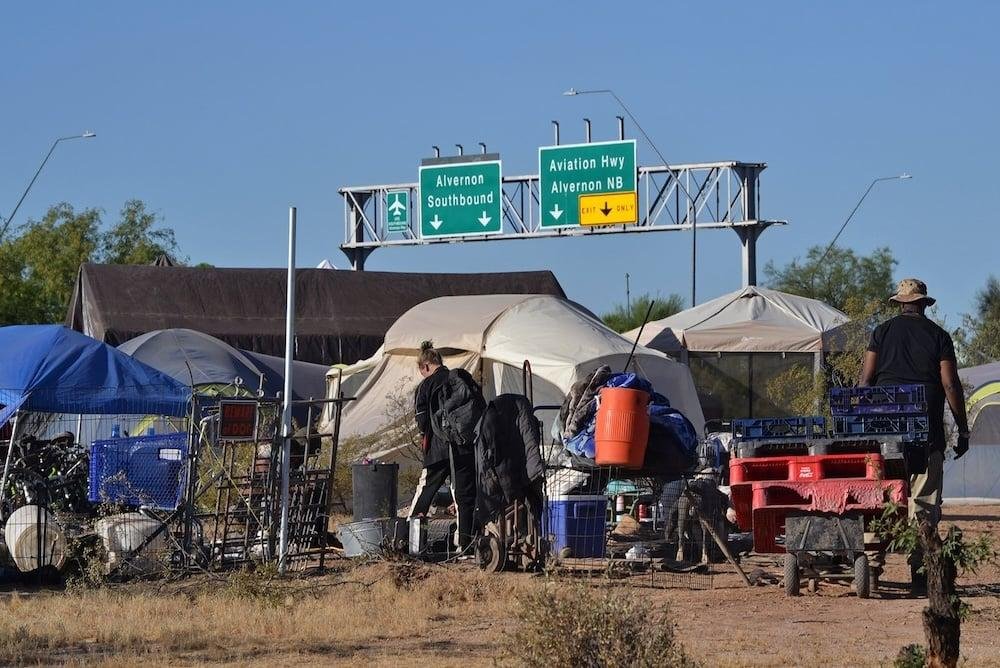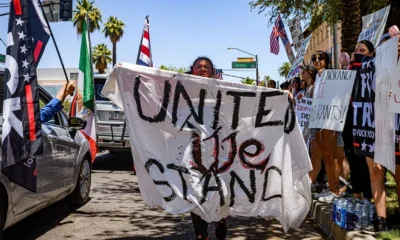family
Trump Shifts Homelessness Strategy from Housing Solutions to Mandatory Treatment

President Donald Trump is proposing a controversial new plan to address homelessness, which includes forcibly relocating individuals living outside into large treatment camps. This approach marks a significant shift from the long-standing “Housing First” strategy that has dominated U.S. homelessness policy for decades, emphasizing housing as a critical element in the fight against the crisis.
In a recent campaign video, Trump described American cities as “unlivable” and vowed to take a more aggressive stance. He asserted, “For those who are severely mentally ill and deeply disturbed, we will bring them to mental institutions, where they belong,” aiming for reintegration once they are deemed capable of managing their lives again.
While the White House has yet to unveil a formal policy, it has signaled a shift toward a treatment-first approach, which could fundamentally alter existing housing and social service programs. This comes in the context of nearly $4 billion in homelessness funding allocated last year, as Scott Turner, head of the Department of Housing and Urban Development, has proposed significant budget cuts and evaluations of current spending.
Turner stated that under Trump’s leadership, the focus will shift away from previous approaches, declaring, “The DOGE task force will play a critical role in eliminating waste and better serving the American people.” However, proposed cuts to agency staffing could disproportionately affect initiatives aimed at supporting the Housing First model.
During his campaign, Trump endorsed opening new treatment facilities on government land, suggesting concepts such as “tent cities” for the homeless. He issued an order in March to clear encampments in Washington, D.C., potentially severing ties between homeless individuals and their case managers and disrupting access to vital services.
The administration is discouraging local governments from following existing federal housing policies and recently reduced the budget for the U.S. Interagency Council on Homelessness, which coordinates homeless funding and initiatives nationally. In response to these measures, Democratic Congressman Maxine Waters criticized Trump for exacerbating the homelessness crisis through reckless policies.
Contrasting with Trump’s plan, the “Housing First” approach, introduced nationally in 2004, focuses on providing stable housing and support services without mandating treatment or sobriety. This model has been credited with effectively reducing chronic homelessness and improving the overall well-being of vulnerable populations.
Experts have expressed concern regarding Trump’s punitive approach, arguing that it could create additional barriers for individuals already facing homelessness. Donald Whitehead Jr., head of the National Coalition for the Homeless, stated, “It’s only going to make things much worse,” pointing to insufficient affordable housing as the root problem.
Past attempts to undermine the Housing First approach during Trump’s first term did not materialize due to COVID-19, but with renewed vigor, certain officials are advocating for a more treatment-centric model. Robert Marbut, who previously led the U.S. Interagency Council on Homelessness, suggested that forcing individuals into treatment would be pivotal in addressing homelessness.
Critics across the political spectrum have noted the rising homelessness issue, with over 770,000 homeless individuals in the U.S. as of last year — an alarming increase of 18% from the previous year. Cities nationwide are responding to public frustration with visible homelessness through various crackdowns, leading to a wave of legal measures allowing the arrest or fining of individuals living outdoors.
In California, for instance, Governor Gavin Newsom’s “CARE Court” initiative mandates treatment for individuals even when housing options remain scarce. Local leaders in cities like San Francisco and Los Angeles are prioritizing encampment sweeps, despite challenges in providing adequate shelter or housing solutions.
Disagreements persist regarding the future of the Housing First model. While some conservative leaders demand its dismantling in favor of mandatory treatment programs, many experts argue for a balanced approach that upholds both housing support and treatment options.
Evidence indicates that the Housing First model has successfully transitioned many chronic homeless individuals into stable living situations, as documented by various studies that highlight its efficacy. Yet, the approach has faced scrutiny over funding inadequacies and uneven implementation.
As discussions around homelessness policy gain urgency, it remains evident that a decisive and informed approach will be crucial in addressing this escalating crisis across the United States.


















